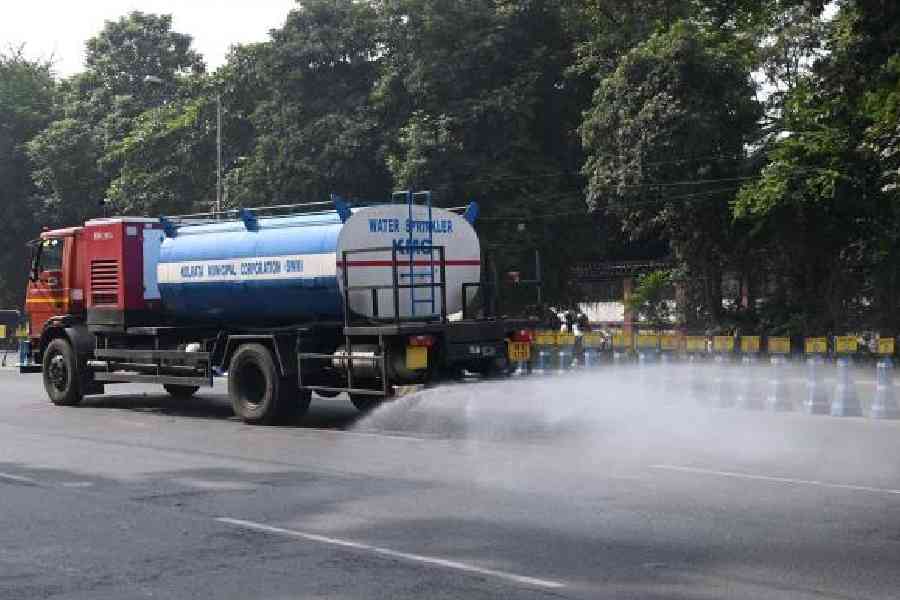Long-term measures like increased use of public transport and reduced dependence on private cars, forcing industrial units to shift to cleaner fuel and proper disposal of solid waste can help lower air pollution during winter, scientists said.
Calcutta’s average air quality was “poor” and “moderate” on many days in November. The Air Quality Report, published by the state pollution control board, between November 23 and 30 showed that the air quality was “poor” on four days and “moderate” on the other days.
“Moderate” air can cause “breathing discomfort to people with lungs, asthma and heart diseases” and “poor” air can cause “breathing discomfort to most people on prolonged exposure”, according to the Central Pollution Control Board.
The Kolkata Municipal Corporation (KMC) has been watering roads across the city to keep them moist and prevent resuspension of dust. The measure, though important in keeping dust under control, will not bring down the pollution index on its own, the scientists told Metro.
Public transport
“The government should boost public transport and reduce dependence on private cars. The transport sector is one of the biggest contributors to air pollution in Indian cities,” said Anumita Roy Chowdhury, the executive director of the New Delhi-based Centre for Science and Environment (CSE).
A scientist at the state pollution control board (PCB) said several cars are needed to transport the number of passengers that a single bus can ferry. A Metro train can ferry an even larger number of people.
“The more the number of vehicles, the more the emission and volume of pollutants released in the air,” said the PCB scientist.
Phasing out of old polluting vehicles is also necessary to curb emissions by the transport sector.
Industrial units
Industrial units, too, contribute to air pollution in a big way. Their switch to cleaner fuel will be another step in achieving clean air.
Many industrial units in and around Calcutta still use oil-fired furnaces, said the PCB scientist. “They should be incentivised to switch to electricity or LPG-fuelled furnaces whose emissions are much lesser,” the scientist said.
Many areas surrounding Calcutta — Barrackpore, Belgharia, Rajarhat and Maheshtala — have many small-scale manufacturing units that still use oil-fired furnaces.
Solid waste
Timely removal of all solid waste from the city is also necessary to curb air pollution. The waste that remains uncleared for weeks or months is burnt by local people or municipal waste collectors, loading the air with a high volume of harmful particles.
“Open burning of waste is a major contributor to air pollution. The municipal corporation has to ensure that waste does not accumulate anywhere in the city. That can prevent waste burning in the open,” Roy Chowdhury said.
A lot of toxic elements are released into the air when solid waste is burned, scientists said. In many parts of Calcutta people are seen burning waste to keep them warm at night during winter.
Construction sites
Construction sites are another major contributor to air pollution because of the dust they generate. “All construction sites should be mandatorily covered with geotextile fabric that absorbs the dust emanating from the site. Sand and other construction materials should be kept in a moist condition so dust does not rise in the air,” a scientist said.

